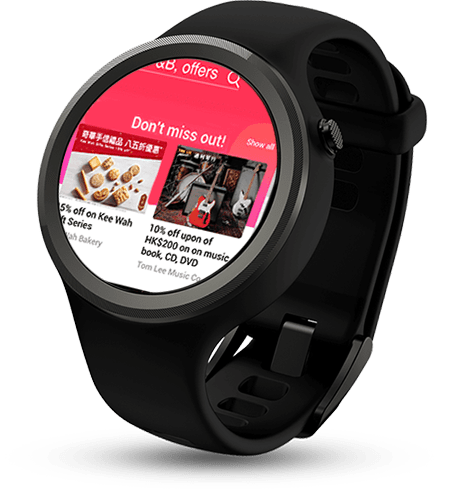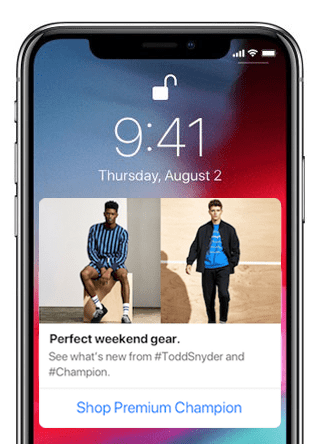
How Microsoft Dynamics CRM Transforms Customer Relationship Management
Discover how Microsoft Dynamics CRM revolutionizes customer relationship management with streamlined processes and enhanced insights.

#FocusOnBestPractices
Evolving technologies always foster critical analysis, and ad-tech is no exception to the rule.
Rapid changes in content trends, consumer choices, and digital channels have reshaped the creative and advertising industry. Here’s an example: The American mobile ad market accounts for 67.9 percent of total digital ad spending. The US market for mobile ads is expected to touch 166.88 billion dollars in 2022.
When content is delivered in tiny snippets with little or no creativity, it means that traditional agencies and advertising firms whose bread and butter is strong creatives and design need to adapt or lose relevance in the market.
Let’s explore the top technology areas that an advertising agency should focus in 2022 to earn more wallet-share from consumers for their customers.
The consumption of ad content has moved beyond print, radio, television, and the internet. Smart devices like wearables and home speakers such as Google Home, Amazon Echo, and much more are on the rise and are highly desirable targets for certain industries. Smart voice assistants like Alexa, Google Assistant, and Siri are offering new opportunities for brands to connect with personalized messaging. Today, interactive voice ads have taken center stage. The omnipresence of voice assistants and the drive to shove voice-based technology investments are encouraging entrepreneurs across industries to look for more monetization opportunities.


In 2022, AI will improve marketing campaigns to deliver more customized and highly focused messages to customers at apt points in the customer lifecycle.
A simple example could be an emotional analysis of video content and display ads based on the sentiment of the scene. We have already seen how powerful machine learning tools have enabled the auto-generation of subtitles, character recognition, etc. The next level is offering avenues for embedded ad content tailored to match the tone and meaning displayed.
Although content marketing is nothing new, the way it gains attention and traction in the market has changed dramatically over the past few years. Here is how. Did you know that 90 percent of marketers leveraging content marketing in the past years will continue to invest in it in 2022? Again, 66 percent of marketers hope that their content marketing budget will shoot up further in 2022 than their budget last year.
Content marketing has evolved from a basic technique for demand generation into a focal point for branding, driving behavioral changes in consumers, and setting the tone for an emotional connection between the consumer and a business.

Technology plays a significant role in this regard by opening an entire range of personalized content marketing avenues. It could be as simple as building a CMS-powered business website integrated with the best marketing automation platforms, or it could be a state-of-the-art email management platform that automates email campaigns and promotions.
Thanks to stiff competition, brands need to differentiate their target audiences at ever more granular levels to promote personalized offerings and remain competitive. Advertising agencies need to have a clear list of subjects for their content, whether videos, texts, or images. Obtaining this kind of comprehensive filtered target list for advertising is made possible through technology solutions like lead generation platforms, intelligent CRM solutions, and efficient CMS-powered enterprise websites. Website cookies, analytics, and social media also provide useful targeted customer data. Besides understanding which data is valuable, the bigger challenge is ensuring data quality in 2022, as there is an overload of inaccurate, obsolete, redundant, and duplicate information. For making precise decisions based on correct metrics, you need to invest in Martech stack, its essential components being CRM, marketing automation, email marketing, and CMS.
These channels provide highly valuable data about customers such as their preferences, their spending patterns, and much more. The greater the amount of data, the greater the opportunities for personalization and emotional connections. It also helps agencies to eliminate wasted effort and save costs for businesses that rely on their service.
Last but not the least, technology plays a crucial role in measuring how effective an ad campaign or advertising activity has been. Given the substantial number of channels and means to connect with consumers, agencies need to be able to play in an entirely new, data-driven space and collect as much intelligent feedback from the channels they are using on behalf of their customers. The power and sophistication of big data platforms, machine learning, and sophisticated visualization tools will help agencies measure their effectiveness and identify those ads and channels that work and those that need improvements. They will also benefit by being able to promote their creative business to new prospects with metrics backed by bulletproof methodologies.
Forward-thinking ad agencies will be focused on taking advantage of the digital disruption happening around the world and adapting their business to suit latest trends and the aspirations of consumers. The goal remains to have their client’s brand positioning perfectly communicated to the right audiences and result in conversions and deals, but the tools are rapidly changing. Technology is now a critical factor.
Get in touch with us to explore the latest ad-tech you can use in your business today.

Discover how Microsoft Dynamics CRM revolutionizes customer relationship management with streamlined processes and enhanced insights.

Learn how Salesforce leverages AI to drive business growth, enhance customer experiences, and improve decision-making with powerful insights and automation.

Uncover the pivotal significance of CRM in the banking and financial sector. Explore its transformative impact on customer relationships and industry success.
| Cookie | Duration | Description |
|---|---|---|
| cookielawinfo-checkbox-analytics | 11 months | This cookie is set by GDPR Cookie Consent plugin. The cookie is used to store the user consent for the cookies in the category "Analytics". |
| cookielawinfo-checkbox-functional | 11 months | The cookie is set by GDPR cookie consent to record the user consent for the cookies in the category "Functional". |
| cookielawinfo-checkbox-necessary | 11 months | This cookie is set by GDPR Cookie Consent plugin. The cookies is used to store the user consent for the cookies in the category "Necessary". |
| cookielawinfo-checkbox-others | 11 months | This cookie is set by GDPR Cookie Consent plugin. The cookie is used to store the user consent for the cookies in the category "Other. |
| cookielawinfo-checkbox-performance | 11 months | This cookie is set by GDPR Cookie Consent plugin. The cookie is used to store the user consent for the cookies in the category "Performance". |
| viewed_cookie_policy | 11 months | The cookie is set by the GDPR Cookie Consent plugin and is used to store whether or not user has consented to the use of cookies. It does not store any personal data. |